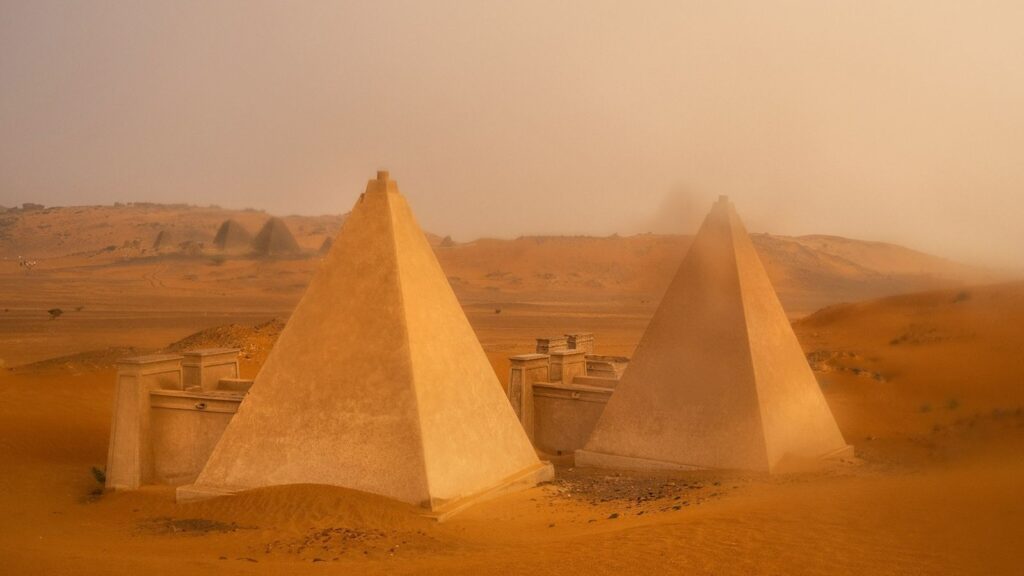
Nestled at the crossroads of Africa, bordered by Egypt, Eritrea, Ethiopia, South Sudan, the Central African Republic, Chad, and Libya, Sudan boasts a history and culture that stretches back millennia. From ancient civilizations and architectural wonders to diverse traditions and a resilient people, Sudan’s story is one of resilience, innovation, and a unique blend of influences.
Ancient Civilizations: From Nubia to Kush
Sudan’s history is marked by the rise and fall of powerful civilizations. Among the most renowned is the Kingdom of Kush, which flourished from around 1070 BC to 350 AD. Situated along the Nile River, the Kingdom of Kush left behind awe-inspiring monuments like the pyramids of Meroe, reminiscent of their Egyptian counterparts. This civilization was an essential player in trade networks, fostering cultural exchanges between sub-Saharan Africa, the Mediterranean, and the Middle East.
Cultural Melting Pot: A Blend of Influences
Sudan’s geographical location has made it a melting pot of cultures, religions, and traditions. Arab, Nubian, and Sub-Saharan African influences have combined to create a distinctive Sudanese identity. Arabic is the official language, and Islam is the predominant religion, shaping many aspects of daily life, art, and architecture. However, the country is also home to a diverse array of indigenous languages, traditions, and practices that continue to thrive.
Colonial Legacy and Independence
Sudan’s modern history was marked by colonial rule, as the British and Egyptians jointly administered the country in the 19th and early 20th centuries. This period of foreign influence left a lasting impact on Sudan’s political and social landscape. However, the quest for independence gained momentum, and Sudan finally gained its sovereignty in 1956. The path to self-determination was not without challenges, including internal conflicts and issues related to governance.
Challenges and Resilience
Sudan’s recent history has been shaped by both triumphs and hardships. The nation’s resilience has been evident in the face of economic struggles, conflicts, and displacement. The Darfur conflict, which began in 2003, drew international attention to the plight of Sudanese citizens and refugees. Yet, Sudan’s people have shown remarkable strength, striving to rebuild and create a more stable future.
Cultural Expressions: Music, Art, and Literature
Sudan’s cultural vibrancy is reflected in its artistic expressions. Traditional music, such as the hauntingly beautiful sounds of the oud and the tambour, captures the essence of the nation’s history. Sudanese art often features vibrant colors and intricate designs, drawing inspiration from the surrounding landscapes and cultural heritage. Renowned authors like Tayeb Salih have also woven Sudanese experiences into their literary works, enriching the global literary landscape.
Towards a Promising Future
In recent years, Sudan has embarked on a path of positive change. The 2019 revolution led to the ousting of long-time President Omar al-Bashir, signaling a shift towards a more democratic and inclusive future. Sudan’s diverse population has shown a commitment to embracing their differences and fostering unity.
As Sudan continues to write its history, the world watches with anticipation. Its rich tapestry of culture, history, and resilience provides a source of inspiration for generations to come. Through challenges and triumphs, Sudan remains a testament to the enduring spirit of its people.
